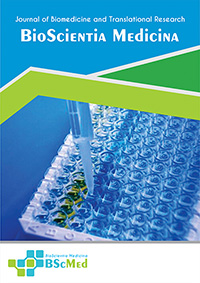Main Article Content
Abstract
Background: Vitiligo, a common depigmenting disorder, presents with a variety of clinical manifestations. Dermoscopy, a non-invasive skin imaging technique, has emerged as a valuable tool for evaluating pigmentary disorders. This study aimed to analyze the dermoscopic patterns of vitiligo lesions in a cohort of patients at a tertiary care center in Surakarta, Indonesia, and to correlate these patterns with disease stability.
Methods: This cross-sectional study included 20 adult patients diagnosed with vitiligo at the Dermatology and Venereology Outpatient Clinic of Dr. Moewardi Regional General Hospital Surakarta in July 2023. A dermoscopic examination was performed on all patients using a polarized light dermoscope. Dermoscopic features were analyzed and categorized based on the BPLeFoSK criteria (Border, Pigment Network, Lesions, Follicular, Koebner). Disease stability was assessed based on clinical and dermoscopic findings.
Results: The majority of patients were female (75%) and between 21-40 years old (65%). All patients exhibited the characteristic "white glow" under dermoscopy. Other common findings included reduced or absent pigment network (40% each), perifollicular hyperpigmentation (30%), and perilesional hyperpigment (30%). Satellite lesions and micro-Koebner phenomenon, indicative of disease activity, were observed in 10% of patients each. Based on these findings, 80% of patients were classified as having stable vitiligo, while 20% had unstable vitiligo.
Conclusion: Dermoscopy revealed a spectrum of patterns in vitiligo lesions, with the "white glow" being a universal finding. The majority of patients in this cohort had stable vitiligo. Dermoscopy can aid in assessing disease activity and guiding treatment decisions in vitiligo patients.
Keywords
Article Details
As our aim is to disseminate original research article, hence the publishing right is a necessary one. The publishing right is needed in order to reach the agreement between the author and publisher. As the journal is fully open access, the authors will sign an exclusive license agreement.
The authors have the right to:
- Share their article in the same ways permitted to third parties under the relevant user license.
- Retain copyright, patent, trademark and other intellectual property rights including research data.
- Proper attribution and credit for the published work.
For the open access article, the publisher is granted to the following right.
- The non-exclusive right to publish the article and grant right to others.
- For the published article, the publisher applied for the Creative Commons Attribution-NonCommercial-ShareAlike 4.0 International License.





